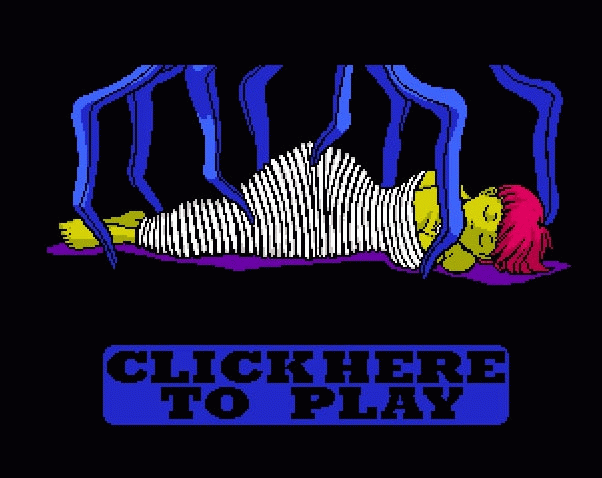

We may earn revenue from the products available on this page and participate in affiliate programs. Learn more ›
The internet revolution has changed the way we create and showcase work. Amateur videos recorded on cellphones are getting more eyes than the latest ABC midseason replacement. The blog has brought democracy to the written word. Cheap technology and digital distribution make it easier than ever before for your little brother’s band to be heard around the world. Why hasn’t this populist revolution happened to video games?
In her new book Rise of the Videogame Zinesters: How Freaks, Normals, Amateurs, Artists, Dreamers, Drop-outs, Queers, Housewives, and People Like You Are Taking Back an Art Form, Anna Anthropy looks at the daunting technological barrier to the medium’s growth, and presents a solution.
Because serious programming has been a prerequisite of game development, the people who put in the effort to make games are predominantly the people who have been playing them, and they make games like the ones they play. Coupled with the rising cost of making a blockbuster game, you have an industry that is allergic to risk. It’s a feedback loop that’s threatened to make the medium creatively stagnant.
The picture is less bleak outside of the mainstream. Indie game developers have more channels than ever to distribute their work. Every console has its own online market place, and breakout successes like Angry Birds and Draw Something are changing the way we think about the viability of mobile gaming. This digital revolution is already happening. It’s allowed somebody like Anthropy, a transgendered game design school dropout, to buck the system and gain critical acclaim outside the mainstream, with her own brand of games that mash up ’80s arcade hits and transgressive gender politics. She released her first game, Calamity Annie, a lesbian western shooter, in 2008, the year that Grand Theft Auto IV shattered sales records by giving the audience more of the same old thing. Anthropy has always stayed comfortably at the fringes of the indie scene, a position nearly impossible before the internet age. As somebody who created her own niche in the industry and has never censored herself to make herself commercial, she is an excellent guide into the world of game design as a form of self-expression. Her latest game, Dys4ia, is a short collection of autobiographical mini-games, playable for free online, chronicling her hormone replacement therapy. Meanwhile, mainstream games wouldn’t know what to do with a transgendered character if it hit them in the face.
“Every game that you and I make right now — every weird experimentation, every dinky little game about the experience of putting down your dog — makes our art form larger.”But even the growth of the indie scene isn’t enough for Anthropy. “What I want from videogames,” she writes, “is for creation to be open to everybody, not just to publishers and programmers.” Will every game be worth playing? Of course not. Some garage bands should stay in the garage. Then what is the point? Zinesters isn’t about creating game for other people: for most of the medium’s life, its been packaged and sold for other people to enjoy. Indie games are now gaining attention because of their financial success. There has been no equivalent to home movies or personal journals. The subliminal message in the book is to remove commerce from the equation completely.
The technological hurdles can now be overcome – the programming language Scratch, for example, is specifically made for children to create their own games – but there is still the perception that making a game is the domain of programmers. Zinesters aims to demystify the digital wizardry.

Before even starting Anthropy excuses the reader. “Your first game will be rough and derivative.” Quality is not the aim here: Anthropy wants more games by more people. What she offers here isn’t the normal racket that artist-targeted how-to books tend to peddle. This is not How to be a Successful Game Developer in 5 Easy Steps or Make a Blockbuster Videogame! “Nor is she writing for the designer who is hoping to hone their skills. Zinesters sets itself apart from excellent game design tomes like Steve Swink’s Game Feel and Raph Koster’s A Theory of Fun and Game Design, by not assuming a familiarity with game design. Because there are so many tools available to the would-be developer, all of which she gets into, the advice in Zinesters is creative and not technical. The advice sounds rudimentary (“Task #3: Teach Your Character to do Something”), but it acts more as a catalyst for ideas and brainstorming. Anthropy, herself a lecturer of game design and a meticulous designer, does not demand formal proficiency here. Zinesters advocates self-expression before all else. The point is not to make a good game, but to make a game, itself a radical notion in a medium that has long been an oligarchy.
Rise of the Zinesters is about education. It is a how-to, indie history lesson, design theory 101, a manifesto, and, surprisingly, as memoir. It serves as an entry into the importance of games and how to make them. But it also is about why making them for ourselves is important.
“Every game that you and I make right now — every five-minute story, every weird experimentation, every dinky little game about the experience of putting down your dog — makes the boundaries of our art form (and it is yours) larger.”
Like a skilled developer, Anthropy, who has been at the vanguard of this movement for years, does not explicitly point the way, but, instead, gently guides.
